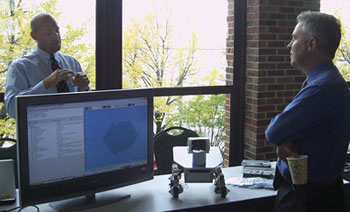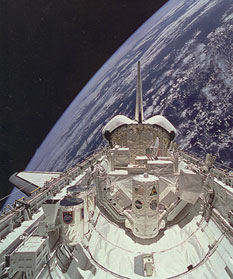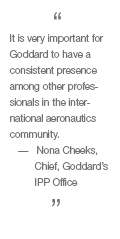|
|||||||||||||||||||||||||||||||||||
| volume 5, number 4: FALL 2007 |
|
||||||||||||||||||||||||||||||||||
|
[Links followed by * open new browser windows.] |
|||||||||||||||||||||||||||||||||||
|
The IPP Office and you: the most innovative partnership of all What we do The IPP Office helps Goddard achieve its mission—within the context of the Agency-wide mission of pioneering the future in space exploration, scientific discovery, and aeronautics research—by identifying and securing agreements with partners that can positively contribute to NASA’s technology developments. The IPP Office brings value to NASA and our partners by:
Where you come in Goddard’s IPP Office works hard toward achieving successful partnerships that provide value to NASA and beyond to support new business, economic growth, collaborative research and further discovery. But we cannot be successful alone. We need your help. As an innovator, you play an important role in helping us achieve NASA’s technology transfer goals by:
For more information about how the IPP Office can help further your research to benefit NASA and beyond, please contact us. |
|||||||||||||||||||||||||||||||||||
|
|
Technology Title: Cryogenically Compatible Flexure-Snubber System for Adhesively Bonded Dissimilar Materials Subjected to High Vibration Environments Inventor: James Pontius (Code 542) Case No.: GSC-15369-1
What it is: A structural system that enables dissimilar materials adhesively bonded together to:
What makes it better: The innovation consists of incorporating two novel features—a twin axis, and a three-blade “flexure” and a “snubber” preloaded together. The flexure maintains alignment of an optical component (such as a microshutter array) and allows for differential thermal expansion at cryogenic temperatures, while the snubber protects the component(s) from being damaged by extremely harsh launch conditions and vibrations. The use of a snubber converts the dynamic problem to a static one, significantly limiting displacements and accelerations, while judicious choice of the flexure and snubber materials prevent the snubber from coming into contact with the optical materials at operating cryogenic temperatures. How it might be used: The system is the current design for the James Webb Space Telescope* (JWST) NIRSpec microshutters silicon substrate mounting. The NIRSpec microshutters are at the heart of JWST’s ability to perform multi-image spectroscopy at 35 Kelvin. Other applications that would need to survive harsh launch conditions and then operate at very low temperatures would benefit from the system as well. Examples of such applications may be found in other NASA, government, and defense missions. Tech transfer status: A patent application has been filed. The IPP Office is engaging with interested organizations outside NASA as well as other NASA missions that may benefit from this unique system. File your New Technology Reports (NTRs) on eNTRe*. For more information, contact Goddard’s IPP Office (6-5810).
|
||||||||||||||||||||||||||||||||||
Bradley Frey Tell us a bit about the research you’ve been doing for Goddard. Over the past five years, Doug Leviton (code 551) and I have constructed the Cryogenic High Accuracy Refraction Measuring System (CHARMS)*, a one-of-a-kind facility at Goddard used to measure the refractive index of optical materials at cryogenic temperatures. This facility allows us to characterize the refractive index properties of a wide variety of optical materials that are used as lenses and filters in new instrument optical designs. Why is this type of measurement important? The refractive index of a material is an important property to optical designers since it tells them how a particular material will refract or bend light of different wavelengths and at different temperatures. For example, the NIRCam instrument for JWST* will operate at very cold temperatures, and the properties of its lenses will be very different in orbit than at room temperature on the ground. Understanding these sometimes-subtle differences allows instrument teams to optimize their optical designs for flight performance and to minimize very expensive cryogenic testing before launch. So is this research new to NASA, or has it always been a part of mission science? While some of this research has been done in the past for the most common optical materials, there has been little done in some cases since the 1960’s. Of the measurements that have been done, we have found that few measurements have been performed at very low cryogenic temperatures, and they were of only limited accuracy. Since that time, the development of supporting technologies for high performance, cryogenic, infrared instruments has expanded dramatically, therefore increasing the demand for characterization of new materials and at new wavelengths and temperatures. Further, there have been significant improvements in material production processes and purity, which also influence refractive index. The CHARMS facility at Goddard is the only facility in the world capable of performing these refractive index measurements over the wide range of wavelengths and temperatures at the accuracies we can achieve. We have been able to achieve these accuracies by improving upon the techniques used by previous investigators and by utilizing several new NASA technologies including ultra-high resolution, absolute optical encoders* invented by Doug Leviton.
And how does this research specifically benefit NASA? The measurements performed by CHARMS are important not only to the success of current NASA missions, but also in opening up the design space for future instrument design concepts. For example, we have performed many measurements for the JWST NIRCam instrument. Since NIRCam’s optical design is almost entirely refractive—including six lens elements in each channel—and operates at a temperature near 37 K, measuring the refractive indices of the materials used in their optical elements was a mission-critical, risk-mitigation effort. We have also performed measurements for the Kepler Photometer* mission where we were once again able to provide mission—critical measurements to prove that their field large corrector lens would perform to its stringent requirements in orbit, allowing the mission to achieve its science goals. In addition, once we have completed measurements for a particular material, other optical designers can use these data as a starting point for future optical designs. For newly developed materials or materials that haven’t been characterized in more than 50 years, our measurements open up the design space of materials from which designers can choose. So organizations or researchers outside NASA can also benefit from these new measurements? Yes, many of the benefits to NASA also apply to outside organizations. In most cases the data we provide isn’t available anywhere else in the industry or in the literature, so organizations designing cryogenic infrared instrumentation across the globe can utilize our capabilities. We have collaborated with groups from all over the world—universities, ground-based observatories, private companies—to provide either custom measurements or data for materials that we have measured for other customers. This has allowed these organizations to improve their instrumentation in support of NASA contracts or in the pursuit of goals similar to those of NASA’s missions.
Have these collaborations been through tech transfer agreements facilitated by the IPP Office? Many of them, yes. Since we completed and published our initial measurements for the JWST/NIRCam and Kepler missions, we have received dozens of inquiries from outside organizations wanting to benefit from our capabilities. There has been significant interest in the CHARMS facility from across the scientific community, and we have been working with the IPP Office over the past couple of years attempting to establish Space Act Agreements to bring in work from these outside organizations to Goddard and CHARMS. After considerable effort, we have completed three of four agreements with the fourth pending approval at the time of this publication.
What do you see as the value of technology transfer and/or partnering with outside organizations for collaborative R&D? Working with external organizations is a good way to advertise the unique capabilities like CHARMS that we possess here at Goddard. These agreements are a good way to bring in funding for fundamental research no longer supported by Goddard in the current funding climate. If not for these Space Act Agreements, the CHARMS facility would have been completely idle for the past two years, limiting the availability of crucial data to the entire infrared science community. Any advice for your colleagues? If you are considering establishing a Space Act Agreement, know that the process is time consuming and will take a considerable amount of effort. Working with international organizations in particular on these types of agreements is cumbersome based on the Agency’s policies and some inexperience by HQ reviewing such agreements. Though one of our agreements was completed in a month, the three remaining agreements took between nine and 24 months to complete—all of which were for less than two weeks’ subscription of the CHARMS facility. Since potential customers generally do not anticipate these kinds of delays for small contracts, you may want to let them know up front that there can be a very long lead time to process these kinds of agreements, and that you cannot specify an accurate delivery date until after the agreement is officially approved. If their schedule is compatible with this timeline—or can tolerate a potential delay of this magnitude—providing this information at the outset will help to appropriately set their expectations and mitigate future frustration. Once the process for establishing Space Act Agreements is mature, these agreements have the potential to be a great resource for NASA and ultimately benefit all parties involved.
|
|||||||||||||||||||||||||||||||||||
|
|
The IPP Office is pleased to announce the following new agreements:
MOU = Memorandum of Understanding SAA = Space Act Agreement A Memorandum of Understanding (MOU) between Goddard, the National Cancer Institute (NCI), and the University of Maryland (UM) is enabling collaborative development of nanoscale field effect transistor (NanoFET) platforms for the recognition of nucleic acid hybridization which can be used to identify key biomarkers in the detection of cancerous cell mutation. This multi-disciplinary effort will help medical researchers use Goddard’s nanotechnology expertise to develop new methods of cancer detection as well as diagnostic and therapeutic applications. The three organizations together will develop a NanoFET prototype, sharing best practices and know-how as well as data, research materials, and results. These collaborative efforts are expected to facilitate the use of nanotechnology for highly sensitive monitoring of gene, DNA, and RNA expression and integrate mutation-recognition software with a final prototype apparatus to be used for diagnosis, prognosis, and detection of cancer. Goddard researchers also are currently investigating other applications for the NanoFET such as in-situ chemical sensors for planetary science. Editor's Note: For more information about this agreement, see innovator Stephanie Getty's profile in the Spring issue. Through a fully reimbursable Space Act Agreement (SAA) between Lockheed Martin (LM) and Goddard, scientists are collaborating on testing of Goddard’s “Navigator” GPS receiver* to determine whether it will meet the navigation requirements of the Geostationary Operational Environmental Satellite Program R Series (GOES-R)* program (a joint effort between the National Oceanic and Atmospheric Administration [NOAA] and NASA) when paired with LM’s specific antenna system implementation. The Navigator is a fully space-flight-qualified GPS receiver that uniquely enables the use of GPS navigation in high Earth orbit (HEO), geostationary orbit, and other high-altitude applications. If testing goes as expected, the combination of the Navigator with LM’s antenna system will reduce risk for the GOES-R mission as well as future NASA, NOAA*, Department of Defense*, and other commercial space missions that require onboard navigation using GPS in geostationary orbit. Promoting cross-agency technology infusion for mutual benefit is the goal behind a new MOU between Goddard and the U.S. Defense Intelligence Agency (DIA). The agreement creates a Technical Exchange Group (TEG) between the two organizations. The TEG will meet biannually with the goal of sharing new technology developments, plans, and future aerospace and defense mission needs and requirements in order to identify potential areas of technical exchange, infusion, and partnerships. As part of the agreement, the DIA will work to advocate for appropriate infusion of Goddard-developed technologies throughout the defense intelligence community. Through two separate, fully reimbursable SAAs, Goddard researchers will conduct absolute refractive index measurements of prisms using Goddard’s Cryogenic High Accuracy Refraction Measuring System (CHARMS)* located in the Agency’s Optics Branch. Sample prisms of various optical materials will be provided by The Aerospace Corporation and the University of California Observatories and measured by CHARMS at a wide variety of temperatures and wavelengths. The refractive index of a material is an important property to optical designers since it tells them how a particular material will refract or bend light of different wavelengths and at different temperatures. This knowledge will enable the organizations to design optics that will behave correctly when cooled to the cryogenic temperatures required to achieve various science goals. The resulting data will also be available to NASA to improve future instrument designs as well as to the scientific community as a whole.
|
||||||||||||||||||||||||||||||||||
|
NASA HQ Announces Seed Fund Recipients
The Innovative Partnerships Program (IPP) at HQ established the Partnership Seed Fund to address barriers and initiate cost-shared, joint-development partnerships, providing “bridge funding” to enable larger partnerships and development efforts to occur. For 2007, Goddard’s IPP Office coordinated and advised the proposal efforts for eight projects that included partnerships with other government agencies, small and large businesses, universities, and other NASA Centers. Of those, the following proposals will receive IPP Seed Funding:
The IPP Office congratulates the recipients and looks forward to hearing about their funded research. In the meantime, the IPP Office caught up with the recipients of 2006 Seed Funding. The four Goddard projects have made great progress:
|
|||||||||||||||||||||||||||||||||||
|
Test Your TTQ* Software Release and IP Protection Decide whether the following software-specific statements are true or false.
|
|||||||||||||||||||||||||||||||||||
|
|
|||||||||||||||||||||||||||||||||||
Adaptive Sensor Fleet Receives R&D 100 Award
For the second year in a row, a Goddard technology has been recognized by R&D Magazine* as one of the top 100 most innovative and technologically significant new products of the year. Dubbed the “Oscars of Invention” by the Chicago Tribune, the R&D 100 awards are annually bestowed upon technologies that have the potential to greatly impact further scientific discovery, human life, and society. Goddard’s Adaptive Sensor Fleet (ASF) technology, one of this year’s winners, has already made significant inroads into oceanographic and simulated planetary research—and its breadth of capabilities has the potential to benefit science missions ranging from oil-spill detection to search-and-rescue operations. The revolutionary ASF software architecture employs a unique, simple interface to remotely control vehicles (such as boats, satellites, rovers, robots, etc.) to work collaboratively in support of many scientific goals. “There really are very few limits to the types of research and exploration goals ASF can be used to accomplish,” said Jeff Hosler, head of the ASF development team at Goddard. “The system can control and monitor boats to study weather phenomena, or detect oil and chemical spills. It could control rovers or robots in space, or unmanned vehicles on Earth for military, mining, search-and-rescue… the possibilities are really quite vast.”
While hypothetical examples of ASF’s applications abound, several significant applications have already been demonstrated with great success. Under a joint effort funded by NASA and the National Oceanic and Atmospheric Administration (NOAA), NASA oceanographer John Moisan led a team that developed six low-cost, fully instrumented “aquabots” that used ASF to direct them in autonomously and collaboratively gathering near-real-time observations of various ocean phenomena, such as algal blooms, ocean currents, temperature, salinity, and other measurements. ASF’s capabilities have also been demonstrated through a collaboration with NASA’s Multi-Purpose- Exoterrain for Robotic Studies (MERS)* project. Using three rovers from Carnegie Mellon University (CMU)*, Jeff Hosler and his team successfully demonstrated the use of ASF to control the vehicles autonomously in this simulated Martian landscape. “I am very proud of what the ASF team, managed by Jeffrey Hosler, has achieved,” said Goddard’s Acting Assistant Chief for Information Systems Technology, Jacqueline Le Moigne. “Not only is ASF going to be of significant benefit to NASA, but it also has the potential to impact life on Earth.” Other managers at NASA are singing the praises of the technology as well. “We are very grateful and pleased to be recognized by R&D again this year for the outstanding innovation that is happening at Goddard,” said Nona Cheeks, chief of Goddard’s IPP Office, which nominated ASF for the R&D award. Goddard Director Edward J. Weiler echoed this sentiment commenting, “It is our hope that technologies like ASF will continue to be of significant impact both within and beyond the walls of NASA.” Along with IPP Office representative Enidia Santiago-Arce, ASF team lead Jeff Hosler attended the R&D 100 Awards ceremony October 18 in Chicago where he accepted the award on Goddard’s behalf. NASA Inventions and Contributions Board Awards The following awards were issued by ICB* during the fourth quarter of FY07. Software Release Awards
Tech Briefs Awards
For more details, contact Dale Hithon or visit NASA Awards.
|
|||||||||||||||||||||||||||||||||||
|
IPP Office Represents Goddard at IAC 2007
IPP Office Chief Nona Cheeks attended the 58th International Astronautical Congress (IAC)* in Hyderabad, India September 24–28. Hosted by the Indian Space Research Organisation (ISRO) and Astronautical Society of India (ASI), the event’s theme was “Touching Humanity: Space for Improving Quality of Life.” The week-long event hosted space professionals, journalists, and students from all corners of the globe. Representing Goddard, Cheeks co-chaired a session entitled, “Innovating Through Technology: Spin-In and Spin-Off.” The session provided a global perspective on best practices for technology transfer and the facilitation of innovative partnerships. “The IAC provides us an ideal opportunity to identify partners to meet NASA infusion needs, to network with potential future collaborators and to learn new business processes and tactics,” said Cheeks. |
|||||||||||||||||||||||||||||||||||
|
|||||||||||||||||||||||||||||||||||
|
You can report new project technologies through the online eNTRe* system. |
|||||||||||||||||||||||||||||||||||
|
Chief: Nona Cheeks Goddard Tech Transfer News is the quarterly magazine of the Innovative Partnerships Program Office (Code 504) at NASA Goddard Space Flight Center in Greenbelt, Maryland. This magazine seeks to inform and educate civil servant and contractor personnel at Goddard*, as well as at Wallops Flight Facility* and the Independent Verification and Validation (IV&V) Facility*, about actively participating in achieving NASA’s technology transfer goals:
Please send suggestions or feedback about Goddard Tech Transfer News to the editor or go to our online feedback system*. |
|||||||||||||||||||||||||||||||||||
|
|||||||||||||||||||||||||||||||||||


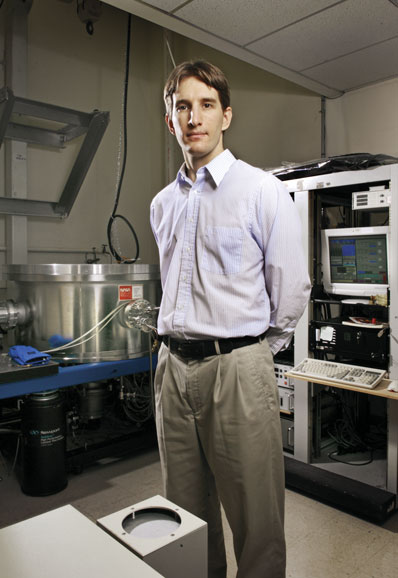

.jpg)
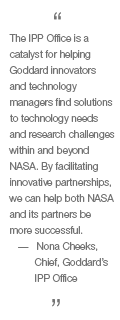

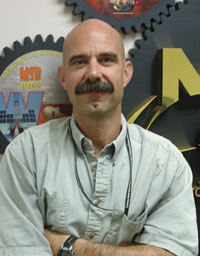

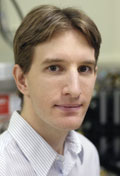
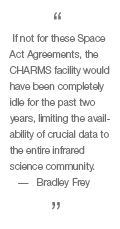
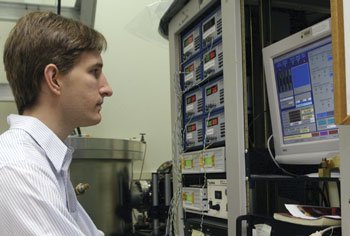

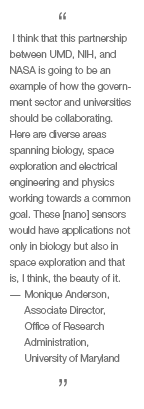

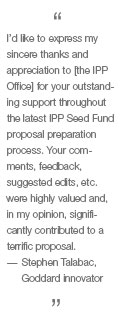


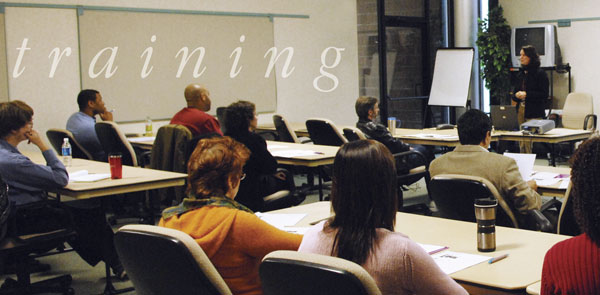

.jpg)
